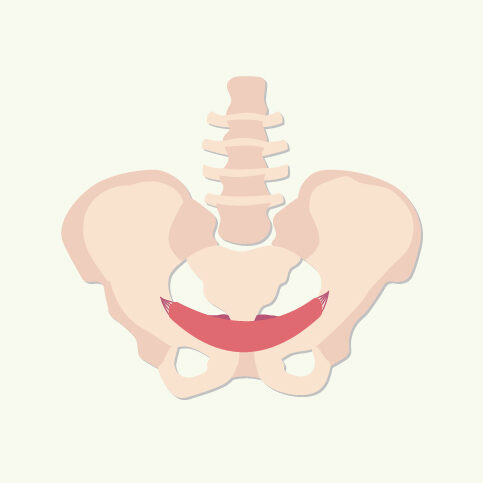Pelvic Health

Do I need pelvic floor physical therapy?
- Do you leak urine with exercise– or when you laugh, cough, or jump?
- Do you get frequent UTIs or painful periods?
- Do you have pain with intercourse?
These are just a few of the common symptoms that suggest pelvic floor dysfunction, and the need for pelvic floor physical therapy.
Pelvic dysfunction is incredibly common.
So common in fact, that these symptoms are often dismissed as “normal”– even by medical professionals! But while these symptoms may be common, you don’t have to settle for being told they are “normal”. All of these symptoms are treatable and curable with the right treatment plan.
If you’ve been living with the above symptoms, know that you can get back to living a normal life with pelvic floor physical therapy.
Pelvic Floor Physical Therapy

Support
The pelvic floor muscles provide support to the pelvic organs, preventing them from descending or prolapsing.
Continence
The muscles of the pelvic floor help maintain urinary and fecal continence by controlling the opening and closing of the urethra and anus.
Stability
The pelvic floor muscles work in conjunction with the deep abdominal and back muscles to provide stability to the pelvis and spine.
Sexual Function
The pelvic floor muscles play a role in sexual function by contributing to arousal, orgasm, and the ability to maintain an erection.
Core Strength
The pelvic floor is an integral part of the core muscles, which provide stability and support to the trunk and pelvis during movement and activities.
Childbirth
During childbirth, the pelvic floor muscles stretch to allow the baby to pass through the birth canal. Strong and flexible pelvic floor muscles can help facilitate a smoother delivery and reduce the risk of injury.
Functions of the Pelvic Floor
Pelvic floor physical therapy treats pain and/or dysfunction of the pelvic floor— a group of muscles that form a supportive, sling-like structure at the bottom of the pelvis. The pelvic floor supports the internal organs and controls many bodily functions, including urination, bowel movements, and sexual activity.
Use this interactive body map to check out some of the most important functions of the pelvic floor!
What Does Pelvic Floor Physical Therapy Treat?
- Urinary or fecal incontinence
- Pain or difficulty with urinating or defecating
- Chronic Urinary Tract Infections (UTIs)
- Overactive bladder
- Pelvic organ prolapse
- Pelvic pain and/or pain with intercourse
- Difficulty exercising postpartum
- Diastasis Recti
- Tailbone pain
- Low back, hip, and sacroiliac (SI) joint pain
Client Experience
Pelvic health is an unfamiliar and sensitive subject for many— but we’re committed to leveraging our deep expertise in pelvic floor physical therapy to demystify and destigmatize conversations about this vital group of muscles. If the idea of pelvic floor physical therapy feels intimidating, please contact us with your questions or concerns! Learn more about what to expect from your evaluative visit below.

Subjective Interview
This will give you the opportunity to share your symptoms, concerns, and goals for physical therapy.

Movement & Orthopedic Analysis
This is your standard “physical therapy” assessment where we conduct a movement analysis and look at strength and mobility of the low back, rib cage, pelvis, and hips, as well as any other body regions that may be contributing to your symptoms.

Optional Pelvic Floor Assessment
With your consent, we may visualize and palpate the components of the pelvic floor externally and/or internally (ie. intravaginally or intrarectally) to quickly determine the root cause of your symptoms.

Developing A Plan of Care & Home Program
This is where we work together to discuss exam findings, arrive at a diagnosis, and develop a clear set of steps to treat your symptoms— including an easy-to-follow home program that will ensure you’re making consistent progress between visits.
Once we initiated pelvic floor treatment into my plan, my excruciating back pain went away. Little did I know [pelvic floor physical therapy] could also help out with issues I thought were unrelated like chronic constipation, pain with sitting and pain with bending forward.
I still can’t believe I am completely pain free and finally back to normal life!
